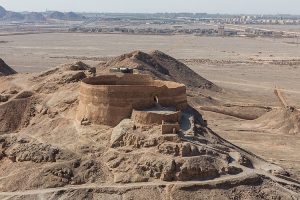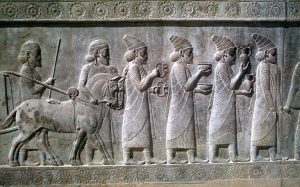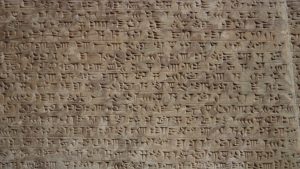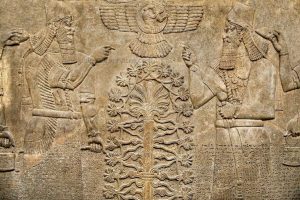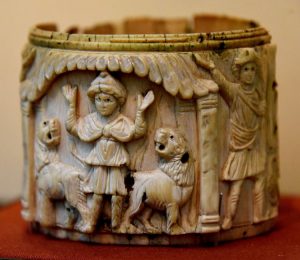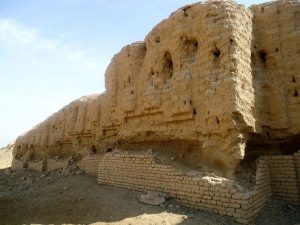Mesopotamian myths appear to have had a more practical purpose and were used to cure and prevent...
Mesopotamia
While these contributions may be understood as commonplace in the present day, they were entirely novel in...
Exploring data from archaeology, letters, contracts, laws, material culture, ancient stories, and religious practices. Introduction The choices...
Zoroastrianism was adopted by the Achaemenid Empire, the Parthian Empire, and found its fullest expression under the...
Ancient Persia had the same interest in what happens after death as any culture in the present...
The Achaemenid Empire was a period of artistic growth that left an extraordinary architectural legacy. Introduction Achaemenid...
Persepolis has a long and complex history, designed to be the central city of the ever expanding...
Iran has inherited numerous architectural traditions over the course of history. Introduction From the Islamic period the...
This period is characterized by major cultural and political changes. Historical Overview During the Early Dynastic period...
They formed the king’s personal bodyguard and were also considered the shock troops of the infantry in...
Persian culture influenced the Greeks and many other civilizations, and its effects still resonate around the world...
Written down in the mid-17th century BCE, the Atrahasis can be dated to the reign of the...
A tombstone commissioned by a man in memory of his deceased mother, “Siporah daughter of Dan”. Everything...
Dogs played a major role in religious rituals as recorded by Zoroastrian texts. Introduction Dogs have been...
The myth, in time, became the reality. Introduction Originality in literary compositions in the ancient world did...
Thousands of years after his rule, Nebuchadnezzar’s name lives on in his buildings and in ancient literature....
Training for the army began at the age of 15 (five for Persian nobility). Introduction The ancient...
Persian governors and the satrapy system established the paradigm recognizable in the present day of a central...
The ‘two rivers’ of the name referred to the Tigris and the Euphrates rivers and the land...
The Persians settled primarily across the Iranian plateau and were established by the 1st millennium BCE. Introduction...
Seleucus was arguably the most successful of Alexander’s successors with the creation of a multi-national empire. Introduction...
Early settlements in the area, such as Tell Brak, date back to at least 6000 BCE. Introduction...
Archaeology, epigraphy, and literature function in tandem in order to establish a more coherent account. Introduction The...
The Sumerians first explored the practice of the scientific hypothesis. Introduction Mesopotamian science and technology developed during...
Examining the three Dynastic Periods from 2900 to 2334 BCE. Introduction The Early Dynastic Period of Mesopotamia...
The Sumerians were responsible for many important innovations, inventions, and concepts taken for granted in the present...
Explore the themes, symbolism, and narrative techniques used to decorate the palaces of ancient Assyria. Introduction From...
Nebuchadnezzar II, the Chaldean king, is supposed to have had the gardens built in about 600 BC...
The city of Babylon was given hegemony over Mesopotamia by their sixth ruler, Hammurabi. Introduction Babylonia, named for...
The origins of Iraqi cuisine and continued popularity. Mesopotamia (from the Greek, meaning “between two rivers”) was...




